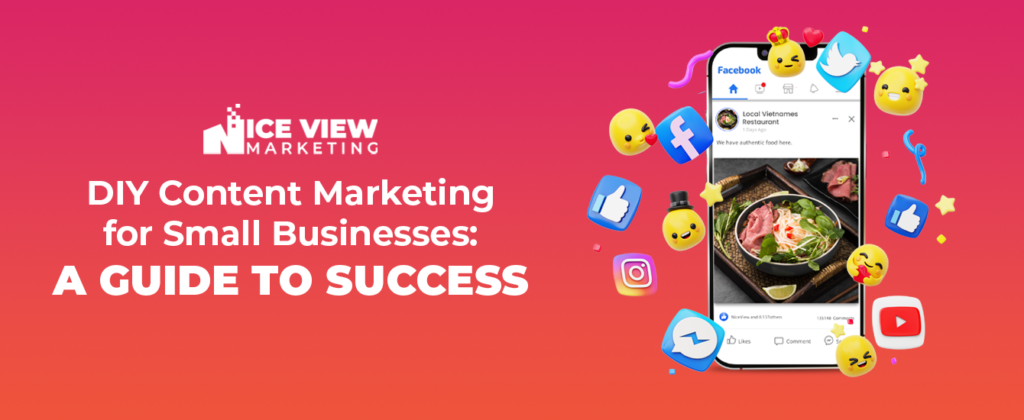Content marketing is king when it comes to establishing a strong online presence for small businesses.

In the digital age, content marketing has become a cornerstone of small business success. It’s a cost-effective way to reach and engage your target audience, build brand authority, and ultimately boost your bottom line. Creating valuable and engaging content is not just an option – it’s a necessity. With limited budgets and resources, small businesses can still harness the power of content marketing by embracing a do-it-yourself (DIY) approach.
In this blog, we’ll guide you through the ins and outs of DIY content marketing for small businesses, helping you build a robust online presence and connect with your customers.
Step 1: Understand Your Audience
Before diving into content creation, it’s crucial to understand your target audience. Who are they? What problems do they face? What kind of content do they consume? Conduct market research to develop buyer personas. Once you know your audience, you can tailor your content to their needs and preferences.
Step 2: Create a Content Calendar

Consistency is key in content marketing. Create a content calendar that outlines what you’ll publish and when. This helps you stay organized and ensures a steady flow of content to engage your audience. Use tools like Google Calendar or Trello to help manage your schedule.
Step 3: Content Creation
- Content Types and Formats
Diversify your content to keep your audience engaged. Consider blog posts, infographics, videos, podcasts, and social media updates. Each format has its own appeal, and by experimenting with different types of content, you can discover what resonates most with your audience.
- Quality Over Quantity
Producing high-quality content should be your priority. Search engines and your audience both favor well-researched, informative, and engaging content. Take the time to research your topics thoroughly and create content that stands out.
- SEO Optimization
Optimize your content for search engines to improve your online visibility. This includes keyword research, on-page SEO, and backlink strategies. Tools like Google Keyword Planner and Yoast SEO can help you with this.
Step 4: Leverage Social Media
Use social media to promote your content and engage with your audience. Share your content on platforms where your target audience spends their time. Interact with your followers, respond to comments, and run paid advertising campaigns if your budget allows.
Step 5: Measure and Analyze
Use tools like Google Analytics to track the performance of your content. Pay attention to metrics like traffic, bounce rate, time on page, and conversion rates. Analyzing this data will help you fine-tune your content strategy.
Step 6: Adapt and Evolve
The digital landscape is ever-changing. Stay up-to-date with the latest trends and adapt your strategy accordingly. Keep learning and refining your content marketing efforts to remain competitive in your industry.
DIY content marketing for small businesses is not only achievable but also a powerful way to grow your brand. With careful planning, creativity, and a willingness to learn, you can create a compelling content marketing strategy that helps your business thrive in the digital age.
